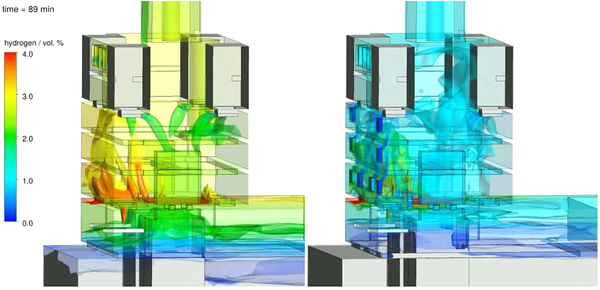Hydrogen Safety
In hydrogen safety research, methods and tools are developed and investigated to help introduce and operate new hydrogen technologies safely. As with all flammable gases, there is a possibility of accidents when using hydrogen, which is why the specific properties of hydrogen require special attention. As a new LLEC project team added in 2021, the task is to focus particular attention on safety aspects and interfaces to new or evolving technologies.

A particularly helpful tool here is numerical flow simulation (CFD = Computational Fluid Dynamics). It enables, for example, the distribution of hydrogen in a room to be simulated. In addition, the source-open CFD code OpenFOAM® is used, which is specially adapted to the requirements in hydrogen safety. This makes it possible to show for specific plants how hydrogen is distributed in the room when a leak occurs, at which points potentially flammable gas mixtures can form and whether these are detected by the existing sensors. In this way, it can be demonstrated, for example, that the planned room ventilation is sufficient to reliably prevent flammable gas mixtures.

In case the ventilation is not sufficient, the use of catalytic recombiners can help to prevent the formation of flammable gas mixtures. Numerical models are being developed for these devices - known in particular from nuclear safety - which catalytically oxidize gaseous hydrogen with surrounding oxygen to water. These models enable the operational behavior to be taken into account in dispersion simulations.
As part of the project, an overview of the hydrogen technologies used in the LLEC (electrolysers, fuel cells, LOHC reactors, etc.) and the existing regulations and recommendations for them will first be compiled. On the basis of various criteria, which take into account aspects such as the quantities of hydrogen used and the scientific development potential, the plants are prioritized. Consequently, CFD models are created for selected plants and scenarios are defined which are subjected to a more detailed analysis. For this purpose, the existing models are further developed if necessary.
